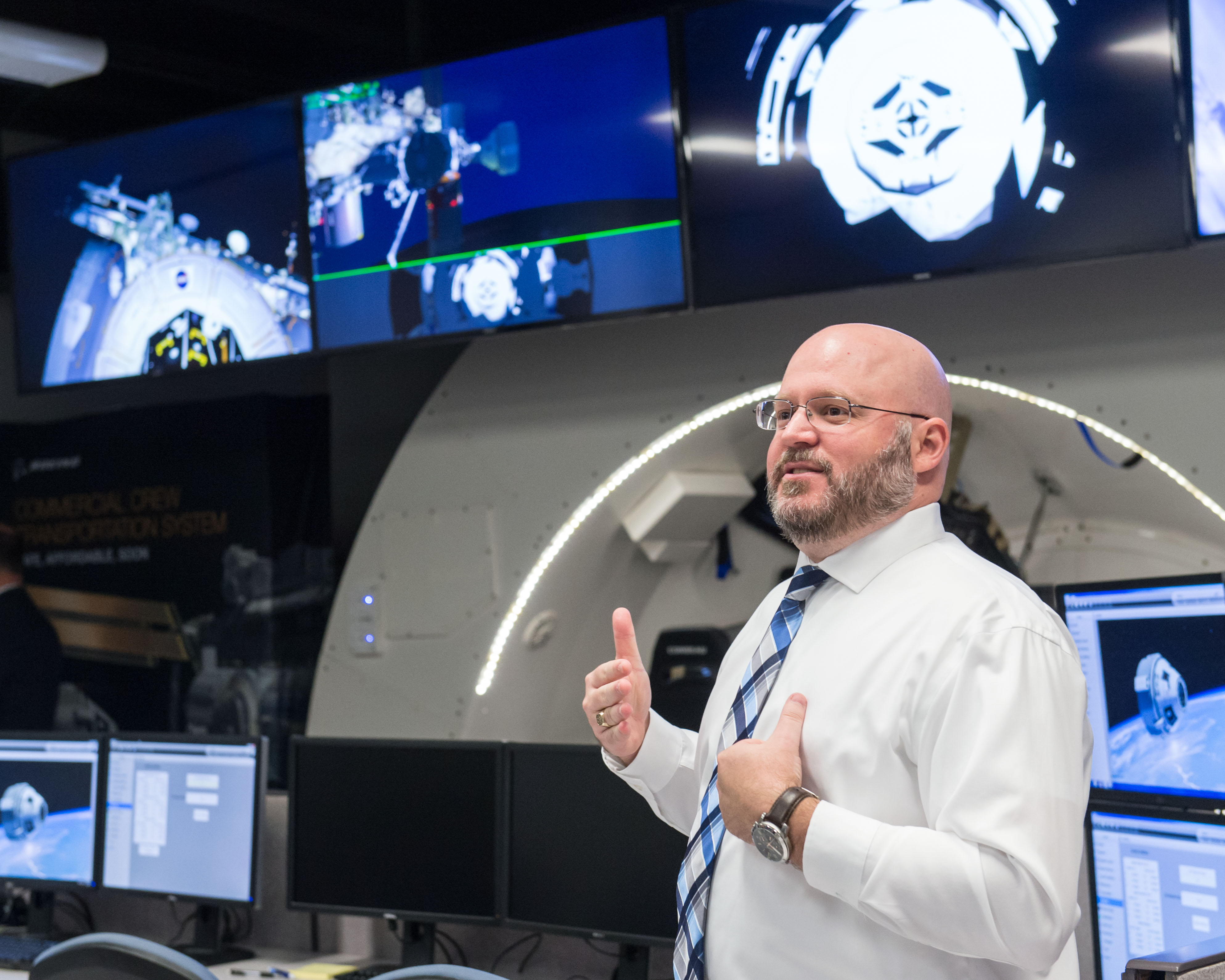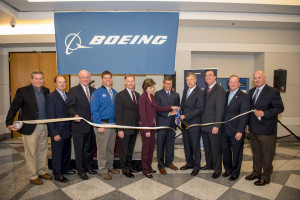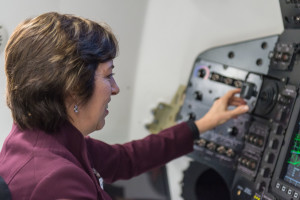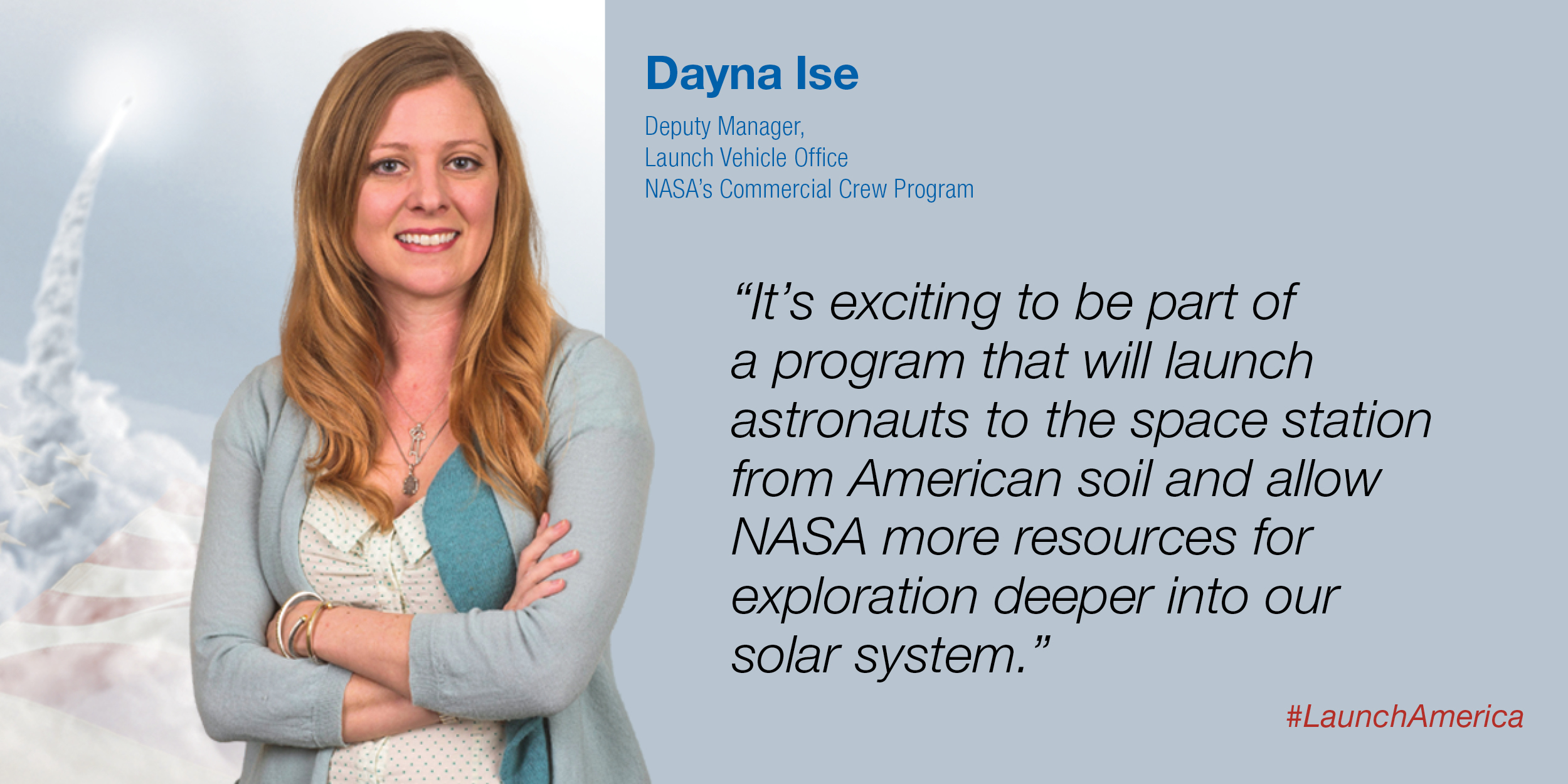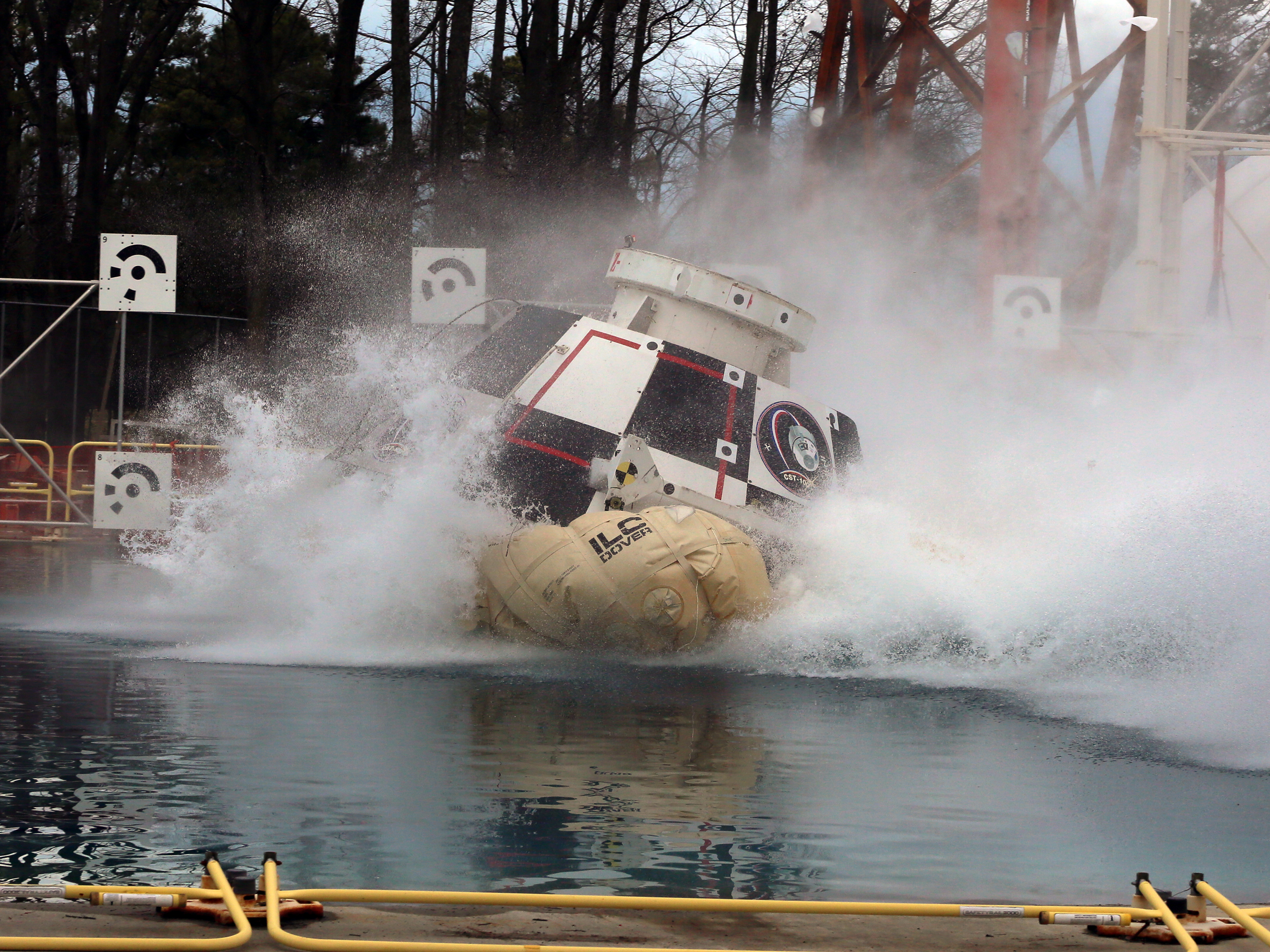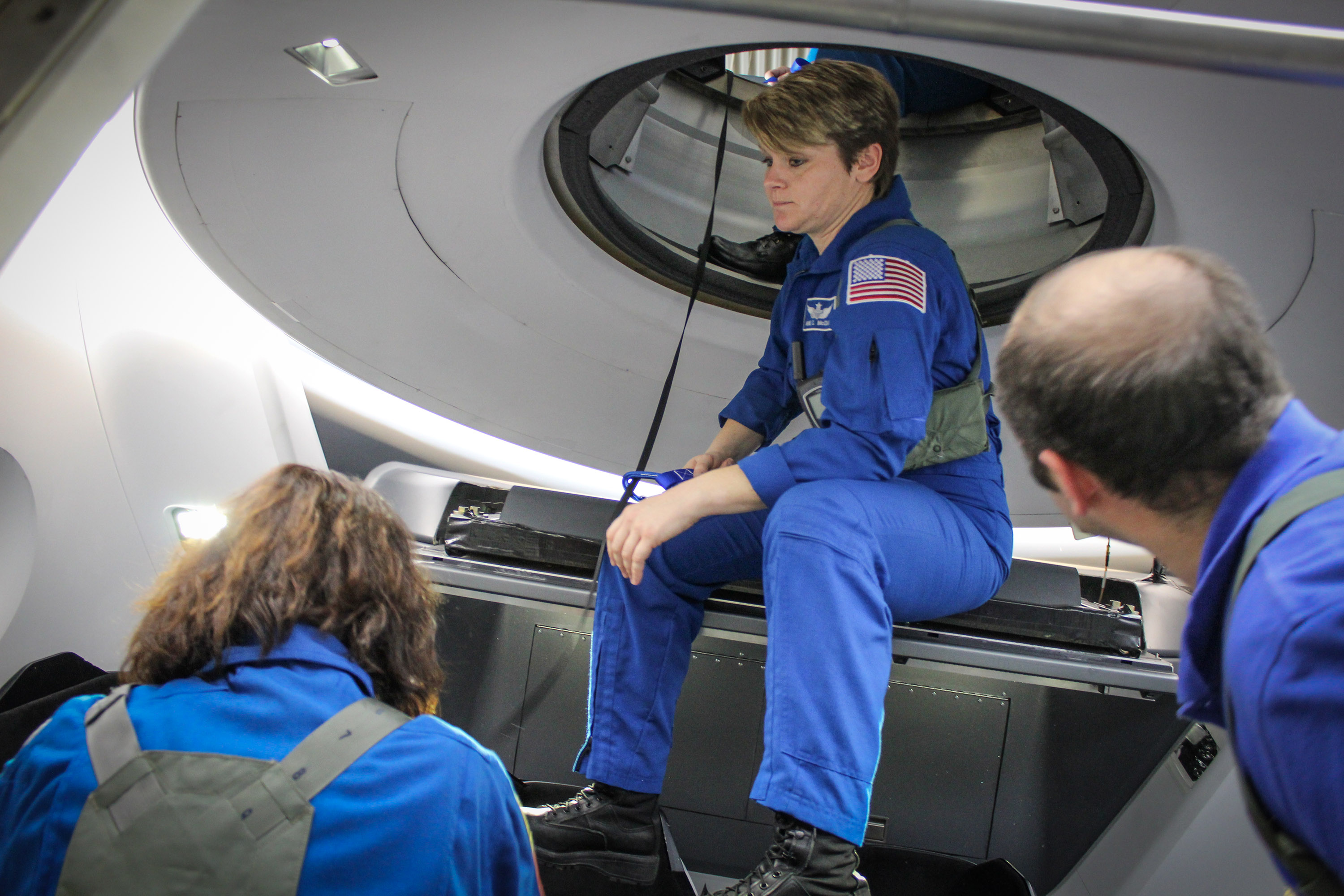Inside of Boeing’s Commercial Crew and Cargo Processing Facility is a full-size mock-up of the company’s CST-100 Starliner, a spacecraft under development in collaboration with NASA’s Commercial Crew Program. The mock-up is more than just for looks as it makes the CAD drawing, or computer-aided design, of the vehicle a tangible reality. It also allows engineers, like Boeing’s Melanie Weber, to have a physical model to test and validate the design of the spacecraft for astronauts and cargo.
Weber has worked on the Starliner for 5 years and supports many elements of the interior design of the spacecraft including crew safety and protection. When the Starliner spacecraft launches on a United Launch Alliance Atlas V rocket from Space Launch Complex 41 with astronauts headed for the International Space Station, Weber knows where her thoughts will be.
“The whole time I’ll be thinking about the crew,” said Weber. “Our team will have done everything we can to make sure that they arrive safely, and that they have a nice ride too.”
Learn more about how the Commercial Crew Program here: www.nasa.gov/commercialcrew


